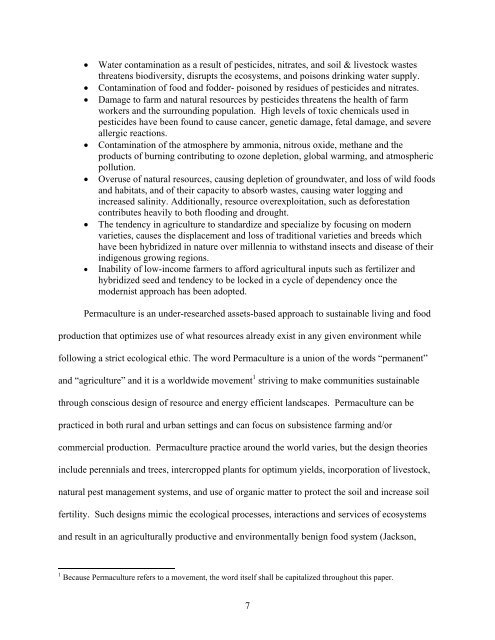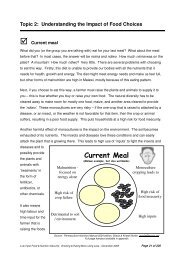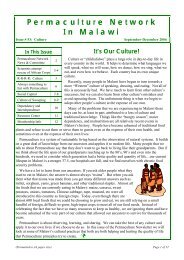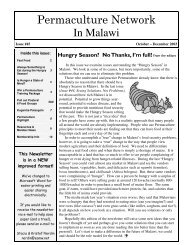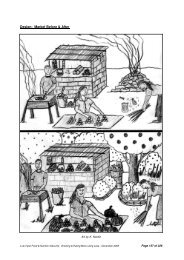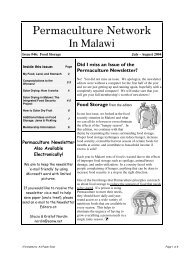Permaculture, Final Capstone Paper 5-26, Hope - Never Ending Food
Permaculture, Final Capstone Paper 5-26, Hope - Never Ending Food
Permaculture, Final Capstone Paper 5-26, Hope - Never Ending Food
You also want an ePaper? Increase the reach of your titles
YUMPU automatically turns print PDFs into web optimized ePapers that Google loves.
• Water contamination as a result of pesticides, nitrates, and soil & livestock wastes<br />
threatens biodiversity, disrupts the ecosystems, and poisons drinking water supply.<br />
• Contamination of food and fodder- poisoned by residues of pesticides and nitrates.<br />
• Damage to farm and natural resources by pesticides threatens the health of farm<br />
workers and the surrounding population. High levels of toxic chemicals used in<br />
pesticides have been found to cause cancer, genetic damage, fetal damage, and severe<br />
allergic reactions.<br />
• Contamination of the atmosphere by ammonia, nitrous oxide, methane and the<br />
products of burning contributing to ozone depletion, global warming, and atmospheric<br />
pollution.<br />
• Overuse of natural resources, causing depletion of groundwater, and loss of wild foods<br />
and habitats, and of their capacity to absorb wastes, causing water logging and<br />
increased salinity. Additionally, resource overexploitation, such as deforestation<br />
contributes heavily to both flooding and drought.<br />
• The tendency in agriculture to standardize and specialize by focusing on modern<br />
varieties, causes the displacement and loss of traditional varieties and breeds which<br />
have been hybridized in nature over millennia to withstand insects and disease of their<br />
indigenous growing regions.<br />
• Inability of low-income farmers to afford agricultural inputs such as fertilizer and<br />
hybridized seed and tendency to be locked in a cycle of dependency once the<br />
modernist approach has been adopted.<br />
<strong>Permaculture</strong> is an under-researched assets-based approach to sustainable living and food<br />
production that optimizes use of what resources already exist in any given environment while<br />
following a strict ecological ethic. The word <strong>Permaculture</strong> is a union of the words “permanent”<br />
and “agriculture” and it is a worldwide movement 1 striving to make communities sustainable<br />
through conscious design of resource and energy efficient landscapes. <strong>Permaculture</strong> can be<br />
practiced in both rural and urban settings and can focus on subsistence farming and/or<br />
commercial production. <strong>Permaculture</strong> practice around the world varies, but the design theories<br />
include perennials and trees, intercropped plants for optimum yields, incorporation of livestock,<br />
natural pest management systems, and use of organic matter to protect the soil and increase soil<br />
fertility. Such designs mimic the ecological processes, interactions and services of ecosystems<br />
and result in an agriculturally productive and environmentally benign food system (Jackson,<br />
1 Because <strong>Permaculture</strong> refers to a movement, the word itself shall be capitalized throughout this paper.<br />
7


